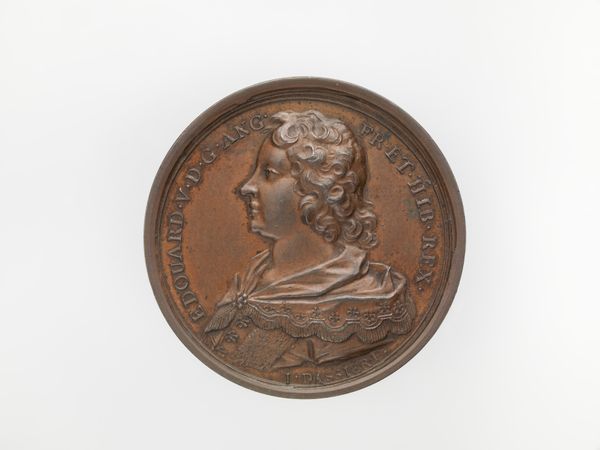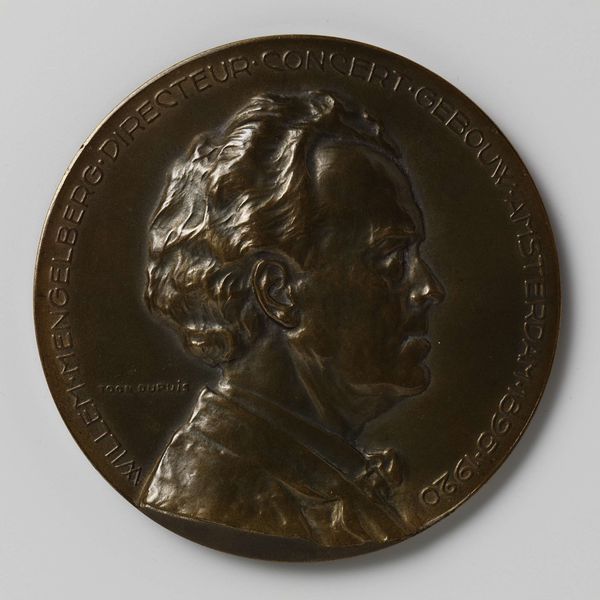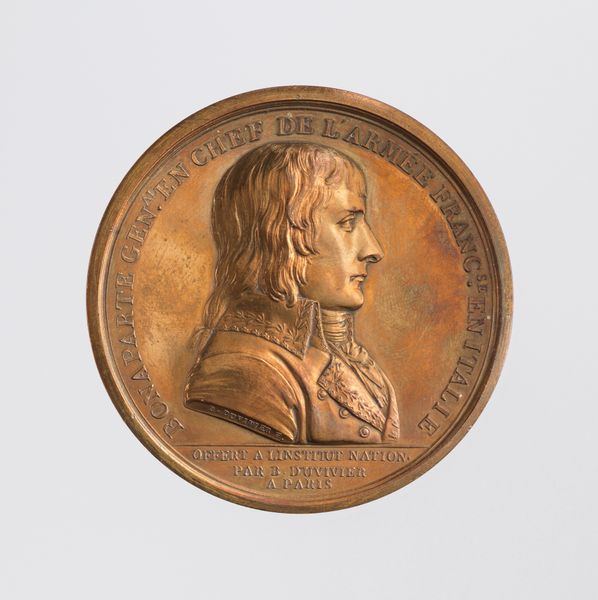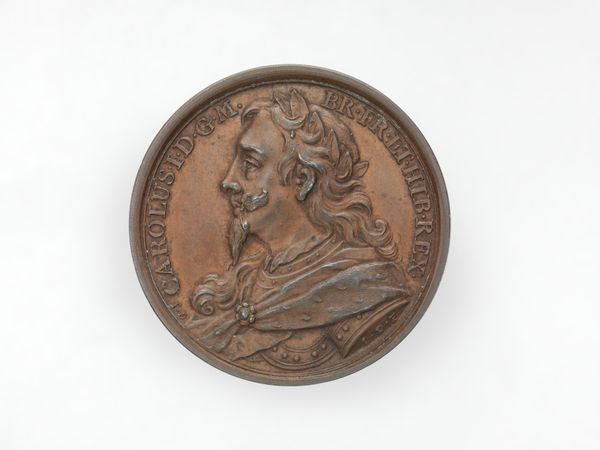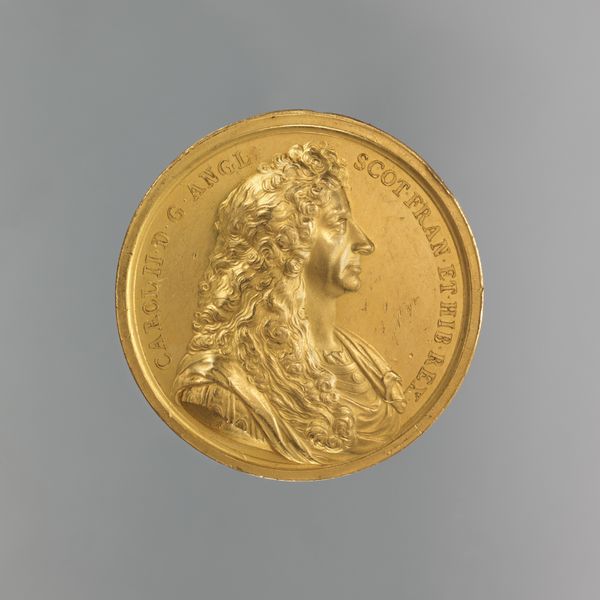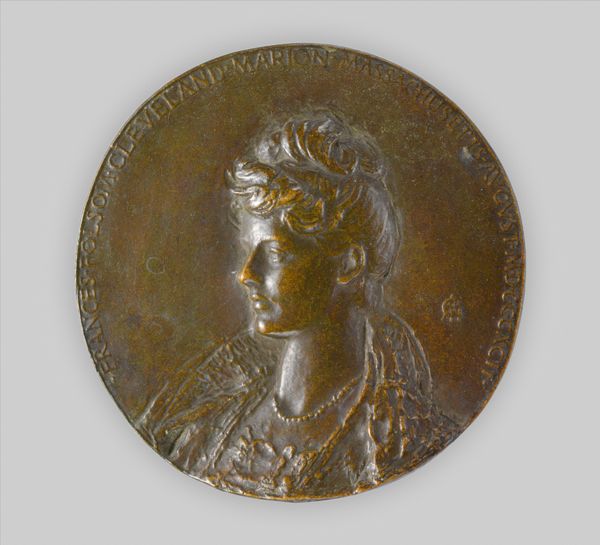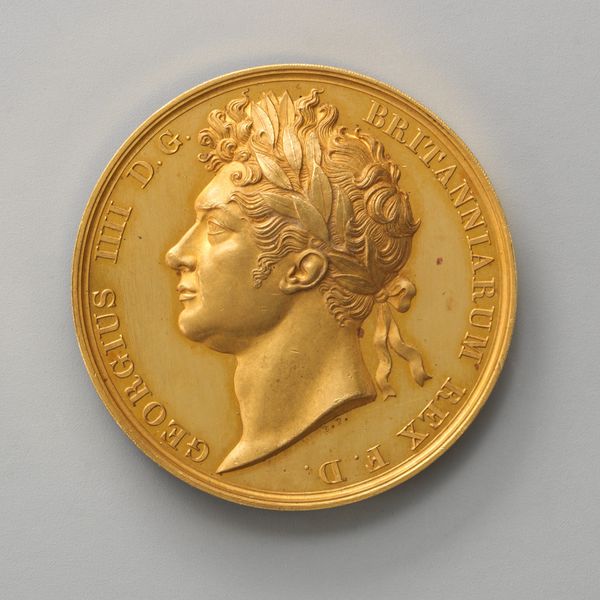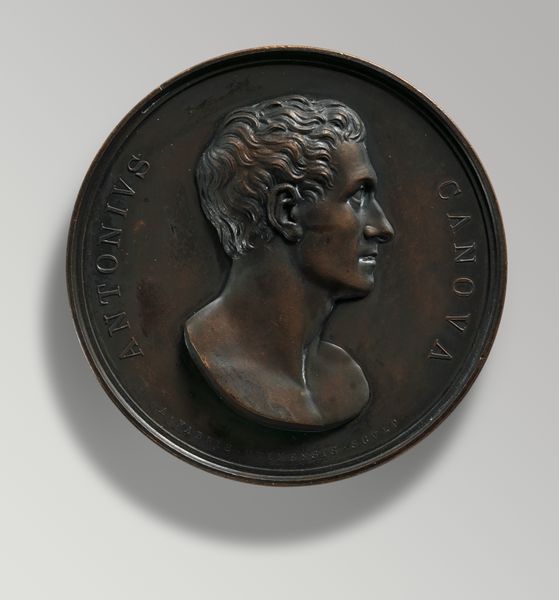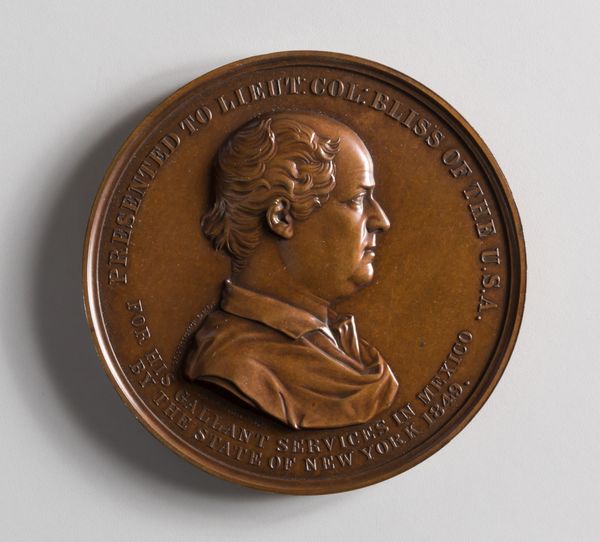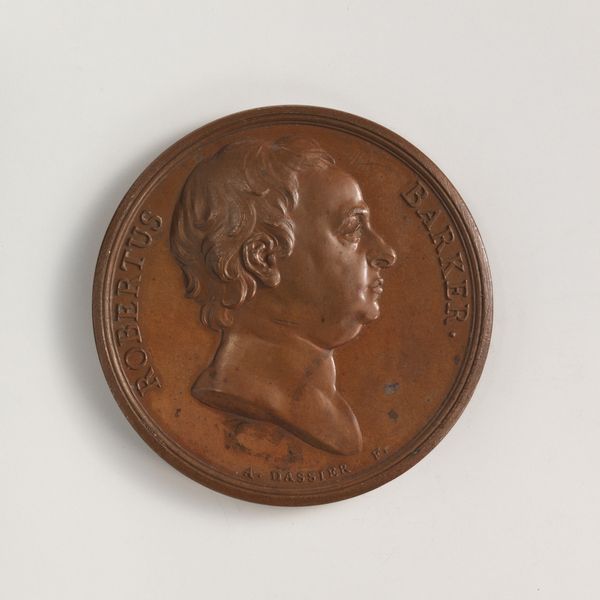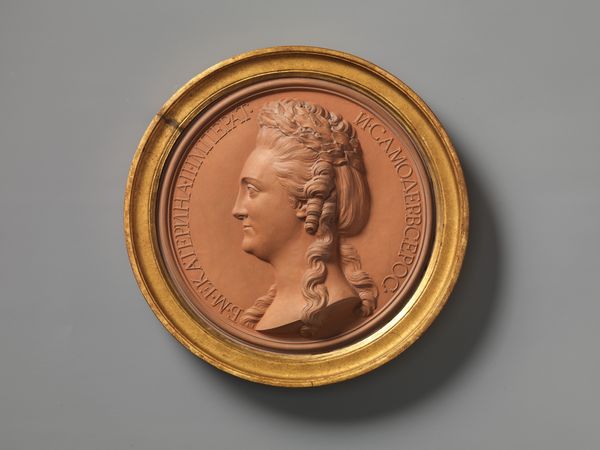
relief, bronze, sculpture
#
portrait
#
neoclassicism
#
sculpture
#
relief
#
bronze
#
sculpture
#
decorative-art
Dimensions: Diameter (confirmed): 6 1/4 in. (15.9 cm)
Copyright: Public Domain
Editor: This is a bronze relief sculpture, "Ferdinand-Philippe, duc d'Orléans," made in 1842. The inscription seems to partially encircle the portrait bust of the Duke. It’s rather… classical, wouldn't you say? What symbols do you see in play here? Curator: I see deliberate echoes of Roman imperial portraiture, down to the laurel wreath and draped toga. These are not just decorative elements. What feeling do you get from the text surrounding the Duke? Editor: It feels formal, maybe commemorative. Almost like words of praise? Curator: Precisely! The text works to legitimize the Duke's power and legacy through its connection to classical ideals. Bronze, too, is critical – consider its long association with permanence and authority in ancient art. The visual language elevates Ferdinand-Philippe above the everyday. Think about how this echoes throughout art history—how do leaders portray themselves, and what does that say about what they want to communicate about themselves? Editor: So it’s not just a portrait, but also a carefully constructed message about power. But the portrait feels... idealized? Is that a message as well? Curator: Yes. The choice to depict him in this idealized, Neoclassical style—youthful, noble, strong—certainly shapes the viewer's perception. Consider the emotional impact on an audience at the time: who was Ferdinand-Philippe, and what would that portrait convey at the time about his reign? Editor: That makes so much more sense now, it's a constructed identity that plays on established cultural understandings of power and legitimacy. Curator: Exactly. It’s a powerful reminder of how imagery shapes not just our perceptions, but also our collective memory.
Comments
No comments
Be the first to comment and join the conversation on the ultimate creative platform.
